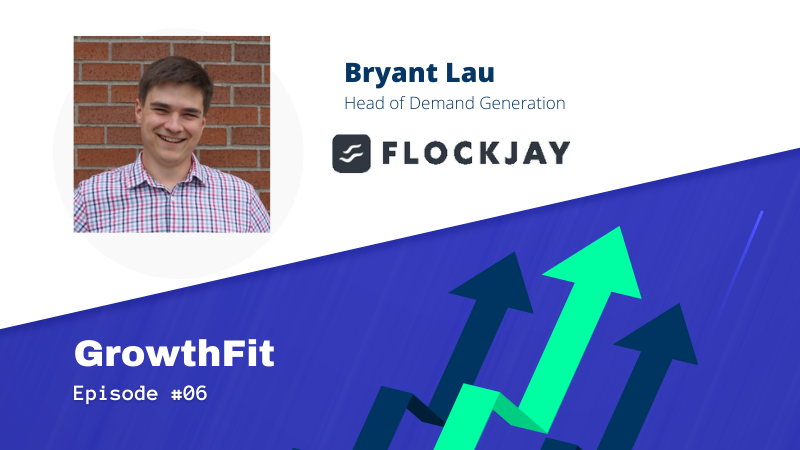Some marketing fundamentals that you should know about Bryant Lau
He depends on Linkedin and Sales hacker and other such sources to learn about sales and marketing. He brings up, “Find a metric where opportunities are created. As a demand gen person, I want to look for the number of opportunities created.”, while sharing about his favorite conversion metric.
How do you define an Opportunity?
Bryant: We first define an Ideal Customer Profile (ICP). Then, gain a clear understanding of who are the different personas, in the company listed as an ICP. Have a good understanding of who the target accounts are and then start prospecting.
Challenges faced by marketers in 2021
Bryant: There are some tactical challenges that deal with remote working. This also changes the performance of email marketing. In fact, when COVID hit, phones stopped working. The broader scope of challenges is to tackle your long-term success. You need to be thinking about building an audience for your company.
Why did ABM on Linkedin turn out to be a great lead gen campaign?
As one of his most successful campaigns, Bryant talks about the use of Linkedin to run an Account-based marketing campaign. And, this was because as Bryant recalls, “We launched it for specific personas within an ICP account.”
“Using email marketing as ‘spray and pray’ is not a recommended best practice as it is not compliant. This is not only from an annoyance perspective but also from a legal point of view. It may have some initial success, but it will disappear after a while.” So, here are some best practices recommended:
- Send emails only to an opt-in database.
- Eliminate the spray and pray generic approach
- Create lists that work
- Remove people who are no longer engaging.
How to use Attribution frameworks to identify the best campaign?
Bryant shares a couple of things.
“1. The place you want to start is understanding the business questions. Internally, build consensus around what are the questions and data sets that answer it and then help and find what works for you.”
“2. What are the different models that work for you?”
For Activation, it is about knowing what was the single thing that caused an MQL or SQL. So, that’s when the first-touch attribution is used. But, when there is a buyer committee in that company, then, multi-touch attribution works.
In this context, Bryant reinforces the importance of understanding the audience. He says, “Understanding the differences between the campaigns and then figuring out which campaign is working better than other campaigns launched is what attribution models help with. It is about being able to identify that a campaign is doing 15% better than other campaigns. Then, take the decision.”
Website Content is personalized based on your audience
Bryant: Being a two-sided marketplace, we have one website. So, for now, we choose how to represent our brand for different audiences. But, going forward, it needs to change. We should cater to different markets, targets, and buyer persona. Believing that your website contributes to 30-40% of the inbound traffic, personalizing the website for your audience is important.
You should not think about the single message but about how different segments are being addressed with the right messaging. You need to figure out the right technology to optimize that 30-40% of the traffic coming from your website.
How do you create an online presence for your brand?
Bryant: SEO is a big part of that with a long-tail SEO strategy. Some keywords that are used by your buyer persona that you may not think of and are not competitive would help you grow organically. Conversion rate optimization is another important aspect because it makes you always be testing to outperform your historical performance.
How ROI on marketing campaigns is made optimal?
Bryant: First, define what is optimal. Then, work on the final conversion rate. Figure out what should be used to optimize. Find what will give you the levy to use budgets for your paid marketing.
3 pillars to successful demand generation
Bryant: It is to have three core pillars
- Creating demand within that marketplace - heavily relying on content marketing
- Conversion of demand
- Then fulfilling the demand is about how your sales convert prospects into customers.
More about marketing
Bryant: We built our Martech stack based on the first principles for Flockjay. Customer data management is one important solution for a more holistic audience approach.
Advice to early marketers
Don’t optimize for title or compensation. Optimize for what you are going to learn. That helps your growth curve.
“Organic is my favorite :-)”
LinkedIn: https://www.linkedin.com/in/bryantlau
Twitter: @bryantajlau

